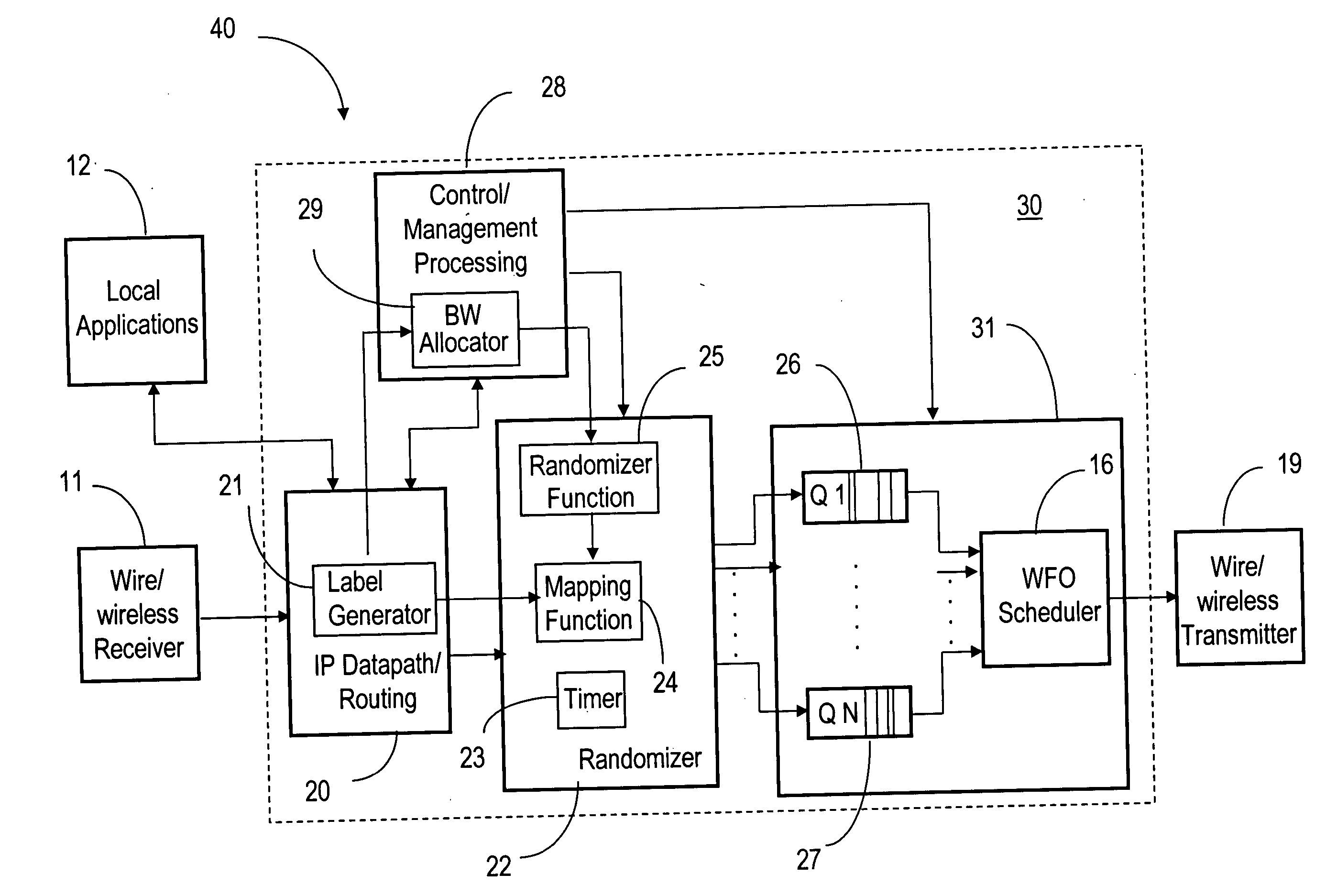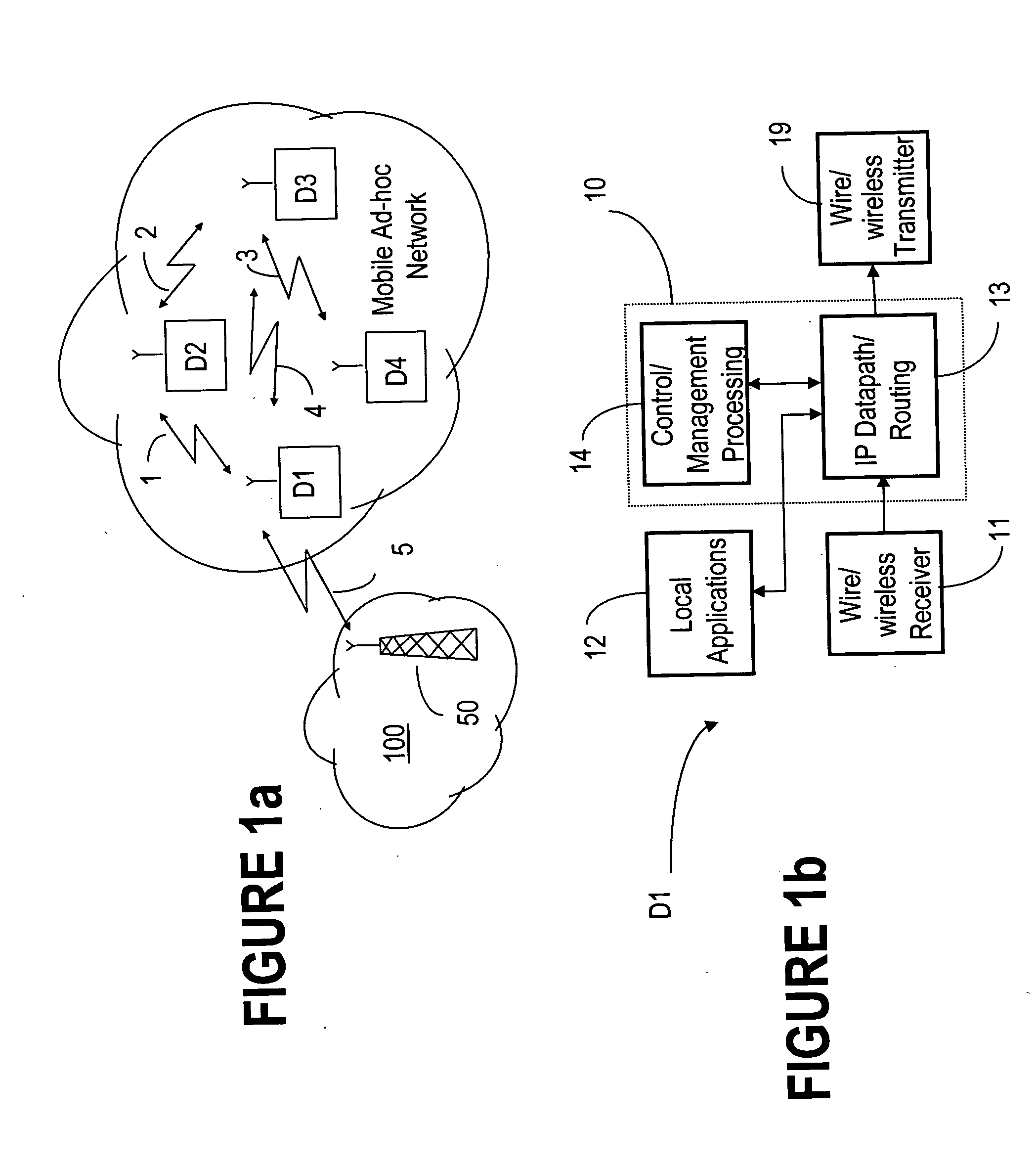QoS capable mobile ad-hoc network device
a mobile ad-hoc network and mobile technology, applied in the field of communication networks, can solve the problems of limited communication and computation capabilities, complicated system bandwidth, and inability to communicate and compu
- Summary
- Abstract
- Description
- Claims
- Application Information
AI Technical Summary
Benefits of technology
Problems solved by technology
Method used
Image
Examples
Embodiment Construction
[0022]FIG. 1a illustrates an example of a mobile ad-hoc network established between mobile devices D1-D4. Devices D1-D4 are mobile ad-hoc routers in this example, which can automatically recognize the presence of, and communicate with other compatible ad-hoc wireless devices, employing a certain packet routing method. Each additional device joining the network is also able to send and receive signals. Although it may seem that order would be difficult to maintain in this type of network, algorithms for routing the traffic at each device are readily available. For example, one mechanism elects one a device as the base, or master, station of the network, with the others devices being “slaves.” Another algorithm in ad-hoc network architectures uses a broadcast and flooding method to all other nodes to establish the identity of all nodes in the network.
[0023] Although FIG. 1a shows the devices as being mobile and communicating over wireless links 1-4, wireline devices may also be tempo...
PUM
 Login to View More
Login to View More Abstract
Description
Claims
Application Information
 Login to View More
Login to View More - R&D
- Intellectual Property
- Life Sciences
- Materials
- Tech Scout
- Unparalleled Data Quality
- Higher Quality Content
- 60% Fewer Hallucinations
Browse by: Latest US Patents, China's latest patents, Technical Efficacy Thesaurus, Application Domain, Technology Topic, Popular Technical Reports.
© 2025 PatSnap. All rights reserved.Legal|Privacy policy|Modern Slavery Act Transparency Statement|Sitemap|About US| Contact US: help@patsnap.com



